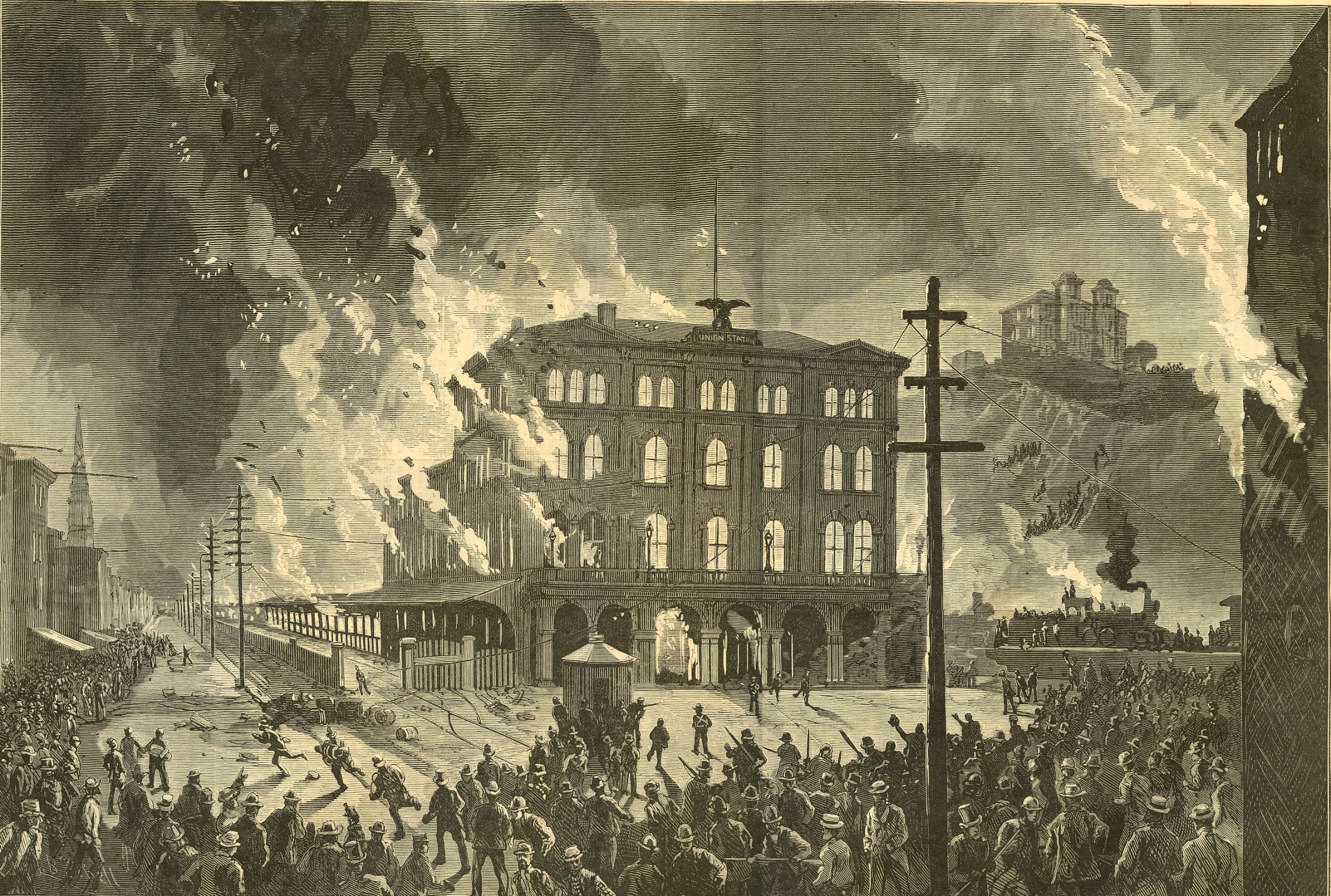Pittsburgh Railway Strike (1877)
Thu Jul 19, 1877

Image: An illustration titled “Destruction of the Union Depot”, depicting the burning of the Union Depot, Pittsburgh, PA during the Great Railroad Strike of 1877. From August 11th, 1877 edition of “Harper’s Weekly, Journal of Civilization” [Wikipedia]
The Pittsburgh Railway Strike began on this day in 1877 when more than 1,400 workers seized control of approximately 1,500 of their company’s train cars, a labor action part of the national Great Railroad Strike of 1877.
The strike was in direct response to the company announcing on July 19th that it would implement the practice of “double heading”, joining two trains’ worth of cars into one train with two engines, for all trains moving through Pittsburgh, a policy that would reduce the number of jobs that were available, require more work, and increase the likelihood of accidents.
The same day one crew, led by Conductor Ryan, sent word that they would not take out their train. Striking workers refused to cede control of the trains to the company, and by midnight up to 1,400 strikers had gathered in the Pennsylvania Railroad rail yards, stopping the movement of some 1,500 cars.
By the morning of the 21st, it had become clear that many of the Pittsburgh police and local militia had sided with the strikers and were refusing to take action against them.
The Pennsylvania National Guard were sent in to forcibly quell the rebellion, and the protest turned into a riot after troops shot into a crowd of people for ten minutes, killing women and children. Rioters began looting, setting fire to the train cars and the Union Depot (shown). They also exchanged fire with the National Guard soldiers.
In total, an estimated 53 civilians were killed and 109 were injured. Eight soldiers were killed in the clashes, another fifteen wounded. This was one of many incidents of strikes, labor unrest and violence in cities across the United States as part of the Great Railroad Strike of 1877.
- Date: 1877-07-19
- Learn More: www.heinzhistorycenter.org, explorepahistory.com, en.wikipedia.org.
- Tags: #Labor, #Riots.
- Source: www.apeoplescalendar.org


(pointed out typo)
Sorry for being nitpicky, this is a good post
Thanks, updated.